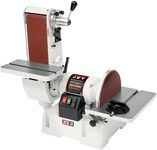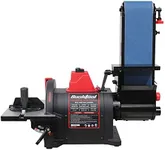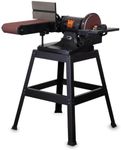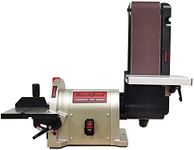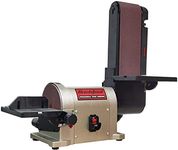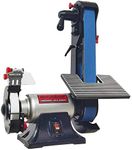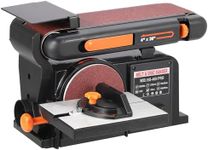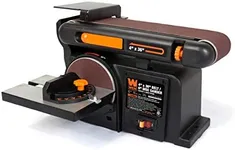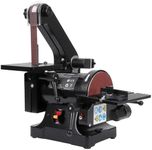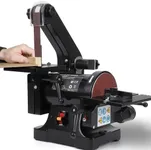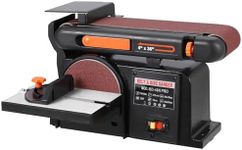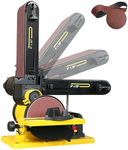Buying Guide for the Best Benchtop Belt Sander
Choosing the right benchtop belt sander can make a significant difference in your woodworking projects. A benchtop belt sander is a versatile tool that helps in smoothing and shaping wood, metal, and other materials. To find the best fit for your needs, it's important to understand the key specifications and how they impact the performance and usability of the sander. Here are the key specs you should consider when selecting a benchtop belt sander.Motor PowerMotor power, measured in amps or horsepower, determines the sander's ability to handle tough materials and heavy-duty tasks. Higher motor power means the sander can work more efficiently and handle more demanding jobs. For light to moderate use, a motor with lower power (around 1/3 to 1/2 HP) may suffice. For more intensive tasks or frequent use, look for a motor with higher power (1 HP or more). Consider the types of projects you will be working on to decide the appropriate motor power for your needs.
Belt SizeThe belt size refers to the width and length of the sanding belt. Common sizes include 4x36 inches and 6x48 inches. A larger belt size allows for more surface area to be sanded at once, which can be beneficial for larger projects. Smaller belt sizes are more suitable for detailed work and smaller pieces. Choose a belt size that matches the scale of your typical projects. If you work on a variety of project sizes, a medium-sized belt might offer the best versatility.
SpeedThe speed of a benchtop belt sander is measured in feet per minute (FPM) or revolutions per minute (RPM). Variable speed options allow you to adjust the speed based on the material and the task at hand. Higher speeds are ideal for removing material quickly, while lower speeds provide more control for finer work. If you work with different materials or require precision, a sander with variable speed settings is a good choice. For general use, a single-speed sander with a moderate speed range can be sufficient.
Dust CollectionDust collection is an important feature that helps keep your workspace clean and reduces the amount of airborne dust. Some benchtop belt sanders come with built-in dust collection systems or ports that can be connected to a shop vacuum. Effective dust collection improves visibility and reduces cleanup time. If you work in a small or enclosed space, or if you prioritize a clean work environment, look for a sander with a good dust collection system.
Build Quality and DurabilityThe build quality and durability of a benchtop belt sander are crucial for long-term use and reliability. Look for sanders made with sturdy materials like cast iron or heavy-duty steel, which provide stability and reduce vibrations. High-quality construction ensures that the sander can withstand regular use and maintain its performance over time. If you plan to use the sander frequently or for heavy-duty tasks, investing in a well-built, durable model is essential.
Ease of UseEase of use encompasses features like tool-free belt changes, adjustable tables, and user-friendly controls. These features can make the sander more convenient and efficient to operate. Tool-free belt changes allow you to quickly switch between different grits, while adjustable tables help you achieve precise angles and support your workpiece. Consider how often you will need to change belts or adjust settings, and choose a sander that offers the level of convenience you need.

